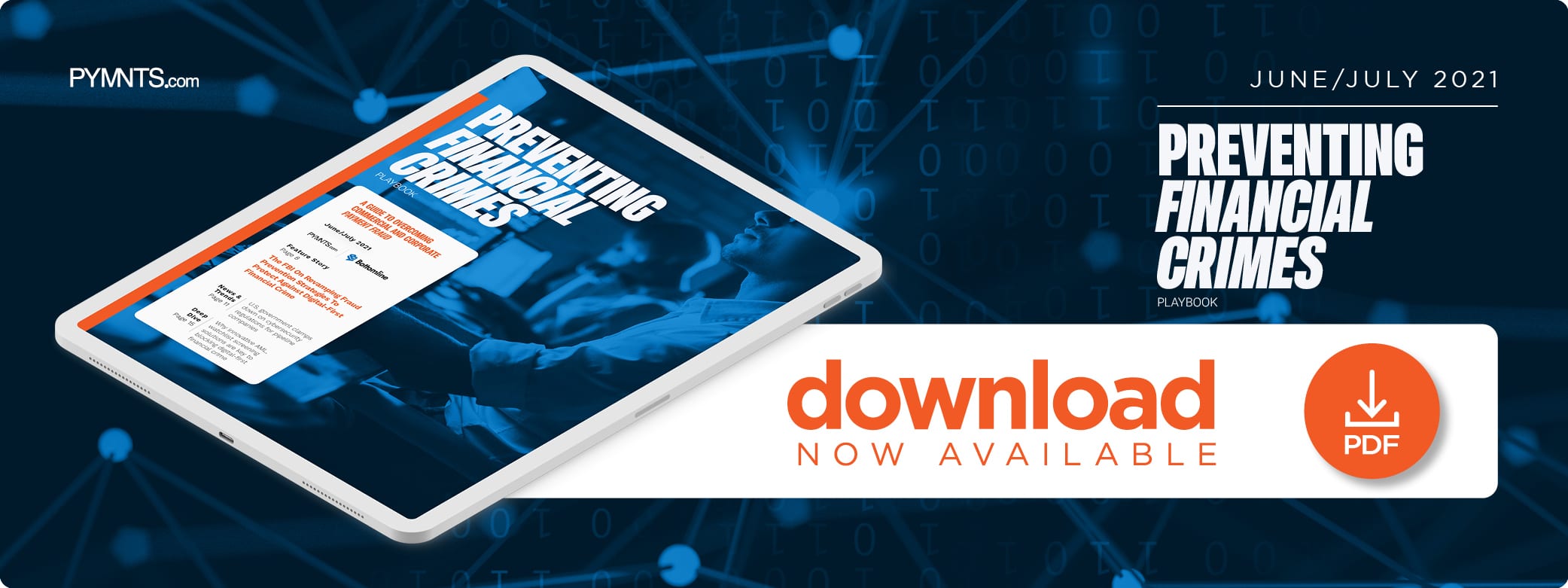Deep Dive: Why Innovative AML, Watchlist Screening Solutions Are Key To Blocking Digital-First Crime

Fraudsters took advantage of the chaos of the past year, targeting banks, businesses and consumers as all three moved more of their payments and private information online.
The costs of financial crime reached a new global high of $42 billion in 2020, with money laundering in particular increasing in frequency and scale. The rising danger of this type of crime has prompted regulators worldwide to increase their focus on financial security in their markets, with many lawmakers proposing new rules for customer verification or tightening financial crime compliance requirements.
Spending on anti-money laundering (AML) and other compliance measures grew by nearly 13 percent year over year in 2020 as these shifts took place, but criminals’ schemes seemingly adapted in parallel. Regulatory fines for money laundering and other financial crimes reached $10.4 billion globally in 2020.
Many banks therefore still lack confidence in the effectiveness of their regulatory compliance efforts. Thirty-nine percent of financial institutions (FIs) indicated that they would like speedier input from law enforcement agencies about any additional steps needed in their programs to comply with current guidelines, for example. Eighty-eight percent of respondents claimed investing in and implementing new technologies is essential for them to remain compliant with these evolving rules.
It is critical for banks to stay informed about ongoing financial fraud trends as well as how the regulations designed to minimize such threats are shifting, and FIs must carefully consider the emerging technologies and tools that can help them fight fraud and maintain compliance.
The following Deep Dive examines how the threats of digital financial fraud and business money laundering are becoming deadlier for these institutions. It also offers a look at how implementing innovative AML technologies and solutions such as watchlist screening can help FIs and businesses protect against these and other financial crimes while keeping up with ever-changing regulatory requirements.
Bringing The Right Technology To The Financial Crime Protection Table
Warding against enterprising digital fraudsters of all types has been a matter of necessity for most FIs since the dawn of online banking, but as more consumers and businesses conduct their financial lives and operations via digital channels, protection has become more difficult and costly. The events of the past 15 months have bumped up these costs, with U.S. financial crime professionals in one study attributing at least 23 percent of the rise in compliance expenses over the past year to the impacts of the global health crisis.
Most professionals surveyed also reported that remote work and other pandemic-related operational challenges severely reduced the effectiveness of their financial crime compliance processes. Sixty-one percent of compliance professionals stated that the health crisis had a negative effect on their abilities to positively identify entities under sanction or politically exposed persons attempting to use their services, for example.
Cybercriminals, meanwhile, have had much less difficulty adjusting to a virtual-first world and circumventing banks’ existing AML standards and regulations. Criminals have long relied on a laundering technique known as “smurfing” to skirt cash transaction maximums meant to ward against financial crime. Criminals using these schemes will break large-scale transactions, which are subject to tighter regulations at most FIs, into smaller ones to fly under banks’ radar.
Incorporating technologies such as watchlist or sanctions screening that can quickly identify entities under sanction should thus be a priority for professionals, especially as tapping the right solutions can also reduce the rapidly swelling costs of financial crime compliance. Banks that invest more heavily in new technologies to support compliance with such sanctions tend to have lower costs than those that do not.
The same study projected that FIs spending 50 percent of their compliance budgets on technology would reduce related expenses by about $5 million annually on average, compared to banks that allocated only 35 percent or less of these budgets to technology. It is thus key for FIs to examine and invest in new technologies and solutions that can provide the swift and secure protection they need to stop financial crimes and stay within regulatory guidelines.
Why Watchlist Screening Is Key To Compliance
Banks must be sure they have solutions in place to stop cybercriminals from bypassing sanctions, especially as these fraudsters use new scams to launder their money. The avenues open to launderers have expanded in recent years, with criminals conducting illegitimate business in markets such as the art industry as they attempt to avoid harsher regulations, for example. Techniques such as smurfing can also be increasingly difficult for banks to detect as online banking adoption grows and expands the amount of transactions they need to track.
It is imperative that FIs incorporate solutions that can instantly and seamlessly detect money laundering or entities under sanction. Implementing tools such as watchlist screening, which searches lists of information to isolate the presence of entities and individuals under sanction, can also minimize the cost of compliance.
It is clear that FIs must keep a careful eye on shifting money laundering tactics as well as which tools are especially effective to halt bad actors before it is too late.
